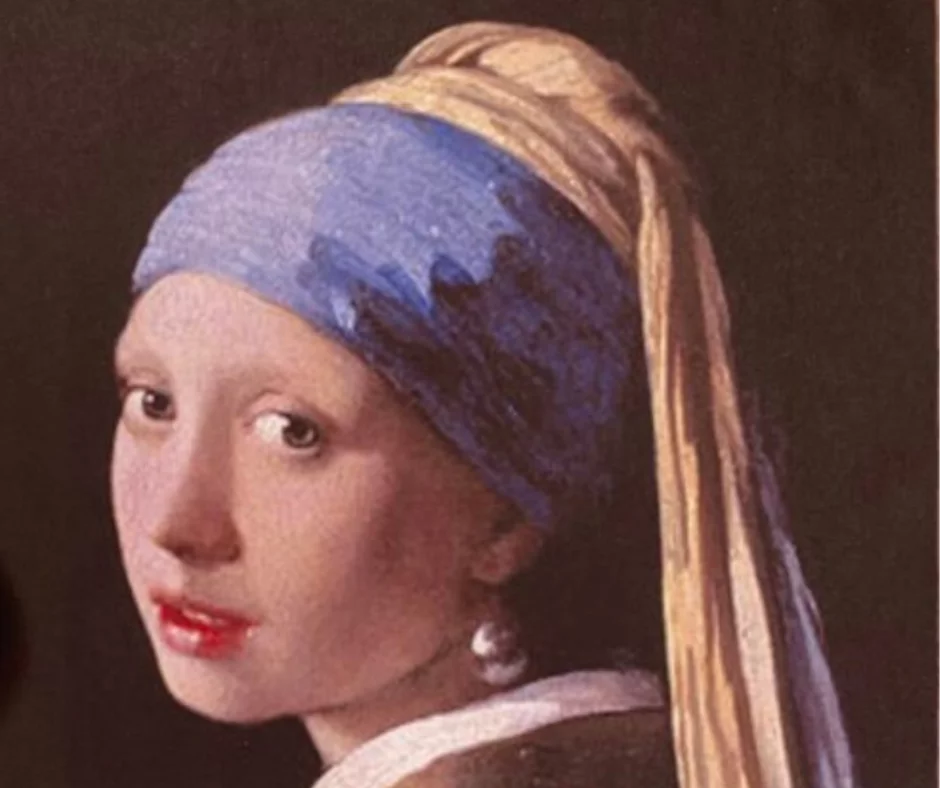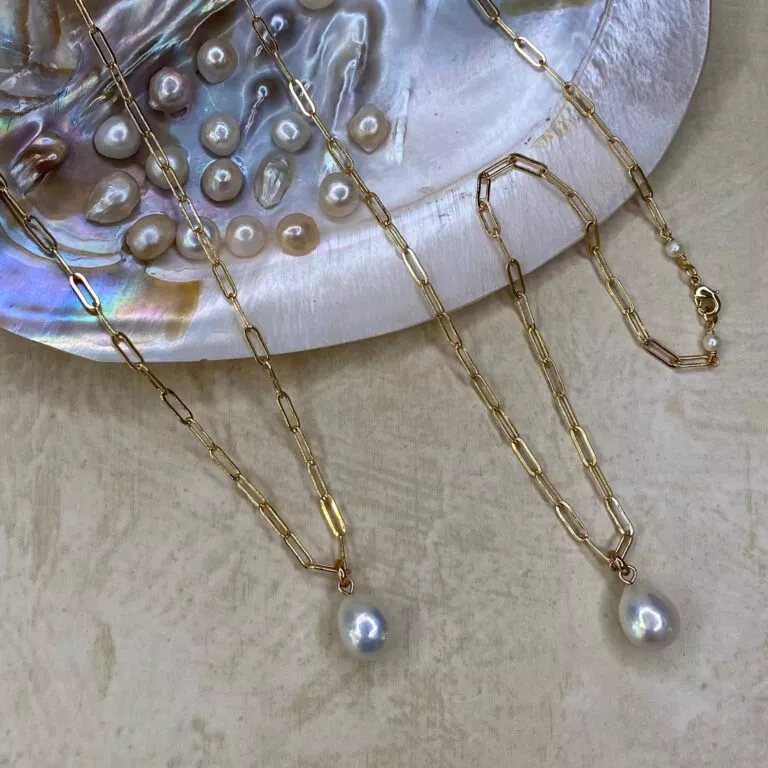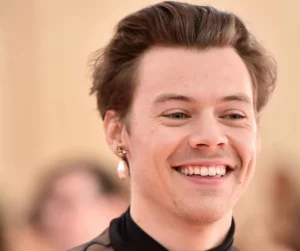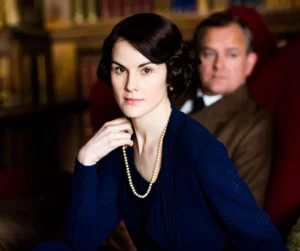

Throughout history people of wealth and status have had their portraits painted – before the invention of photography a painted portrait was the only way to record someone’s appearance. However, portraits were not just for record keeping, they were also used to demonstrate an individual’s power, importance, wealth and beauty.
It’s no surprise that pearls have made an appearance in many powerful portraits in history. Pearls have played an important part of conveying status since the rise of humanism in the Renaissance. Read on to discover more about the relevance of pearls in portraits and to understand more about how these paintings inspired many of our pieces of pearl jewellery here at The Real Pearl Co.
Ancient Pearl Portraits
The Roman Empire was vast, with a substantial need for raw materials. This led to the creation of numerous trade routes for products throughout Europe, Egypt, North Africa and the Mediterranean, which included a multitude of precious and semi-precious stones.
After the Battle of Actium in 31 BC, Egypt became part of the Roman Empire and realistic paintings of people’s faces on wooden panels – ‘mummy portraits’ – became the new trend for burials. These Ancient portraits show their subjects looking their absolute best, with clothing hairstyles and accessories reflecting the fashion of the time in all its splendour with their fabulous jewellery.
Pearls from the Persian Gulf and Coral from the Mediterranean were a really popular choice in jewellery at this time. The 2nd century Romano-Egyptian Fayum mummy portrait below, inspired our 4-Strand White Pearl and Coral Necklace with alternating Pink and Red Coral beads.
Throughout time archaeologists gained an increasing interest in Egyptian history and undertook many archaeological campaigns to secure antiquities for national museums. In 1892 German archaeologist Richard von Kaufmann discovered his most important find, the Tomb of Aline, dating back to 24 AD, which contained eight mummies, three adorned with mummy portraits. We based a pair of our White Coin Pearl Drop Earrings on the earrings worn by Lady Aline in the portrait below, a wonderful historic/contemporary Roman earring for today’s heroines.
Our Pearl and Mother of Pearl Double Circle Earrings are also inspired by the 1st century BC to 3rd century AD Fayum mummy portraits as seen below. They are a striking double circle earring with white pearl – these pieces really are Roman history brought back to life in all their splendour.
Renaissance Pearl Portraits
The Renaissance could well be known as ‘The Pearl Age’ – the end of the 15th century was marked by Columbus discovering America from which a steady stream of wonderful treasure began to make its way to the Old World. Pearls were one of the most commonly-found decorations in Aztec culture and it wasn’t long before Europe wanted to get in on the action. They were once a rare luxury, only available to the elite, but the new trade routes meant they began to appear everywhere in large quantities.
Elizabeth I was obsessed with these jewels from the sea – they represented a symbol of innocence and purity so she wore them in abundance around her neck, wrists, in her hair and on her clothes. In the Metropolitan Museum of Art in New York, the below 1450’s portrait by the Italian Master of the Costello Nativity displays many interesting technical intricacies within the pearl and gold necklace. We have re-created this piece of beautiful jewellery with our White Seed Pearl and Brass Bead Necklace with a multitude of very small pearls woven into it. The Metropolitan Museum of Art liked our necklace so much that it was taken on for a Renaissance exhibition.
The tiny portrait of Madame de Chatillon (below) shows incredible 16th century workmanship, painted by Corneille de Lyon in about 1560-65. We created something similar to this eye-catching piece in the form of our Lapiz Lazuli, Pearl and Hematite Collar Necklace which uses precious Lapis Lazuli rather than the black beads in the painting – we think they add a real lift to bring this Renaissance treasure back to life again.
The striking portrait of Maria of Austria below, painted in 1551 by Antonio Moro inspired our White Pearl and Double Gold Plated Bead Drop Earrings, a beautiful 21st century version which retains the historic spirit mixed with the style of today.
17th century portrait inspiration
Queen Henrietta-Maria, wife of Charles I is depicted in a beautiful miniature painting below by John Hoskins in 1632. This piece inspired our Silver Pearl and Amethyst Collar Necklace, with graduated faceted Amethyst drops, this is more than just a necklace – it’s a real jewel!
The “Lady seated at a window” painting by Gabriel Metsu in the early 1660’s was an inspiration for our stunning Small and Large White Pearl Drop Earrings with a smaller white pearl at the front and a large removable White Edison Pearl.
Cross-hatch, lozenge or diamond patterns were very popular in Tudor and Elizabethen England – you can see in the portrait below of Eleanor of Toledo, 1545 in Florence, that very exquisite, feminine necklaces were made during this time. Our Plaited White Pearl Collar Necklace is our best-selling Tudor inspired necklace, hand-plaiting 3 strands of 7mm white pearls with alternating plated tubes – labour intensive, but so worth it!
Pearl bracelets were a favourite accessory in the 17th century, as you can see in the Portrait of a Girl by Bartholomeus van der Helst, 1645 (below). Our 9mm elasticated bracelets replicate this bracelet look in the portrait. Rather than wrap a long strand several times around the wrist, as was the fashion then, we have created individual elasticated bracelets so you can stack them to your heart’s delight!
The Elizabeth I “Rainbow Portrait”, 1600-02 oil on canvas at Hatfield House displays drapes of long pearl necklaces. Our Long Pearl Necklaces are inspired by this classic look, they are multi-functional long necklaces with 8mm pearls hand-knotted on silk thread.
18th Century portrait inspiration
The below portrait of Penelope Welby and her husband William, painted in 1769 by Francis Cotes was the inspiration for our best-selling 21st Century 5-Strand White Baroque Pearl Necklace and Bracelet Set. Centuries after this portrait was painted this style of multi-strand necklace was also a favourite of Diana, Princess of Wales.
Our delicate White Pearl and Crystal Aqua Set below was inspired by Rosalba Carriera, the extraordinary 18th century Venetian portrait painter who painted this female portrait with a mask, Fondazione Cariplo.
Joseph Wright of Derby’s 1765 portrait of Peter Perez Burdett and his first wife Hannah inspired us to create our White Cluster Clip Earrings with Glass Tips, a cluster of white pearls, each tipped with a glass bead.
The below portrait of Angelica Catalani, an Italian Opera singer, inspired our Drop Earrings with removable White Pearls on 9K Gold Chain, an eighteenth century gem with a modern multi-purpose twist.
Victorian portrait inspiration
The below painting of a young Queen Victoria in her wedding clothes was commissioned by her as an anniversary present to Prince Albert and painted by Franz Xaver Winterhalter in 1847. The leaves in Queen Victoria’s wedding wreath inspired our delicate White Pearl Stud Earrings with Carved jade Leaves.
We hope you’ve enjoyed exploring just some of the many pearls in portraits through the different eras and periods of time. Pearl history is very close to our hearts and we love to share where our inspiration comes from. We really enjoy recreating special history-inspired pieces of pearl jewellery for everyone to enjoy – as this brief look shows, the beauty of pearls is indeed timeless and will always have a place in our jewellery boxes.
Learn more about some of the inspirational woman behind our pearl jewellery on our website.




















